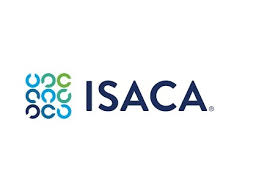Revolutionising Last-Mile Delivery with Delivery Drones: A Deep Dive

Last-Mile Delivery
In the fast-paced world of logistics and e-commerce, the term “last-mile delivery” has become increasingly crucial. It refers to the final leg of a product’s journey, from a distribution center to its ultimate destination—your doorstep. This phase often poses numerous challenges, including traffic congestion, time constraints, and the need for precision in delivering packages promptly and efficiently.
Delivery Drones
Enter delivery drones, an innovative and futuristic solution that promises to transform the way we receive packages. These unmanned aerial vehicles, equipped with advanced technology, aim to take last-mile delivery to new heights—literally. Imagine a world where your online orders are not just dispatched from a warehouse but whisked through the air, reaching you in record time.
Evolution of Last-Mile Delivery
A. Traditional Methods and Challenges
Traditionally, last-mile delivery has relied on ground transportation—vans, trucks, and couriers navigating through traffic-choked streets. This approach comes with its fair share of challenges, including delays, fuel costs, and environmental concerns. The limitations of this method have fueled the need for alternative solutions.
B. Emergence of Technological Solutions
In recent years, technological advancements have paved the way for innovative solutions to last-mile challenges. Companies have experimented with route optimization software, GPS tracking, and smart logistics systems to streamline delivery processes. While these solutions have improved efficiency, they still grapple with the intrinsic limitations of ground-based transportation.
C. Need for Innovative Approaches Like Delivery Drones
Recognizing the shortcomings of traditional methods and current technological solutions, the need for innovation becomes apparent. Delivery drones represent a paradigm shift, offering a unique aerial perspective that circumvents ground-level obstacles. Their ability to navigate swiftly and directly to destinations makes them a compelling solution for the persistent challenges faced in last-mile delivery.
As we delve deeper into the evolution of last-mile delivery, we’ll explore how delivery drones are poised to redefine the landscape and meet the evolving demands of our modern, interconnected world.
Understanding Delivery Drones
A. Definition and Basic Functioning
Delivery drones, often referred to as unmanned aerial vehicles (UAVs), are innovative devices designed to transport goods from one location to another through the air. These compact and autonomous aircraft have gained attention for their potential to revolutionise last-mile delivery. At their core, delivery drones operate on a simple yet sophisticated principle – they lift off the ground, navigate to their destination, and safely land to drop off the package.
B. Types of Delivery Drones
There isn’t a one-size-fits-all model when it comes to delivery drones. Various types cater to different needs and scenarios. Some drones are designed for lightweight, small packages, while others can handle more substantial payloads. Fixed-wing drones resemble miniature aeroplanes and are ideal for covering longer distances, while multi-rotor drones, with multiple rotors like quadcopters, offer increased manoeuvrability in urban environments. Understanding these distinctions is crucial for optimising drone usage in diverse delivery scenarios.
C. Key Features and Capabilities
Delivery drones boast a range of features that make them versatile and efficient. These include GPS navigation for precise routing, obstacle avoidance systems to ensure safe flight, and automated landing mechanisms. Many drones are equipped with sensors and cameras that allow them to perceive their surroundings and make real-time decisions. The ability to communicate with central control systems and adapt to changing conditions further enhances their effectiveness in navigating complex environments.
Benefits of Delivery Drones in Last-Mile Delivery
A. Increased Efficiency and Speed
One of the standout advantages of delivery drones is their ability to significantly reduce delivery times. By bypassing traffic and other logistical challenges on the ground, drones can reach their destination swiftly, making them an excellent solution for urgent or time-sensitive deliveries. This increased efficiency is a game-changer in the world of last-mile logistics.
B. Cost-Effectiveness and Resource Optimization
Delivery drones have the potential to optimise resource allocation in last-mile delivery. With reduced reliance on traditional vehicles and human labour, operational costs can be minimised. Additionally, the flexibility and adaptability of drones contribute to more streamlined and cost-effective delivery processes.
C. Environmental Impact and Sustainability
The eco-friendly nature of delivery drones is a key selling point. By utilising electric power and producing minimal emissions, drones contribute to a greener and more sustainable delivery ecosystem. This aligns with the growing demand for environmentally conscious business practices and addresses concerns about the carbon footprint associated with traditional delivery methods.
Understanding the intricacies of delivery drones and recognizing their benefits underscores the transformative potential they hold for last-mile delivery. As technology continues to advance, these airborne couriers are poised to play a pivotal role in shaping the future of logistics.
Challenges and Concerns
A. Regulatory Hurdles and Legal Considerations
Navigating the skies with delivery drones introduces a myriad of regulatory challenges and legal considerations. Government agencies are grappling with the need to establish clear guidelines that balance innovation and public safety. As the drone industry continues to evolve, stakeholders must collaboratively address issues related to air traffic management, privacy concerns, and airspace restrictions. Striking the right balance between fostering technological advancement and safeguarding the public interest remains a crucial challenge in the widespread adoption of delivery drones.
B. Safety and Security Issues
Ensuring the safety and security of both the drone delivery system and the public is a paramount concern. Accidents, collisions, or even intentional misuse pose risks that need to be addressed comprehensively. From designing fail-safe mechanisms to prevent mid-air collisions to safeguarding against potential hacking threats, the industry faces the challenge of developing and implementing robust safety measures. Building trust among the public regarding the reliability and security of drone deliveries is an ongoing effort that demands constant attention and innovation.
C. Public Perception and Acceptance
The success of delivery drones hinges not only on their technical capabilities but also on how they are perceived and accepted by the public. Overcoming scepticism and concerns about noise, privacy invasion, and the overall impact on daily life is a significant hurdle. Clear and transparent communication about the benefits, safety measures, and positive environmental aspects of drone deliveries is essential to sway public opinion. Striking a balance between technological progress and addressing community concerns is vital for the widespread acceptance and integration of delivery drones into everyday life.
Technological Advancements
A. Innovations Driving the Evolution of Delivery Drones
The landscape of delivery drones is rapidly evolving, driven by a wave of technological innovations. Advancements in battery technology, propulsion systems, and materials have paved the way for drones with increased payload capacities and extended flight ranges. Furthermore, developments in autonomous navigation, obstacle avoidance, and machine learning algorithms contribute to the efficiency and reliability of delivery operations. The continuous quest for lighter, more energy-efficient components and streamlined designs underscores the dynamic nature of technological advancements propelling the evolution of delivery drones.
B. Integration with Other Technologies (AI, IoT, etc.)
Delivery drones are not standalone entities; they are part of a larger technological ecosystem. Integration with cutting-edge technologies such as Artificial Intelligence (AI) and the Internet of Things (IoT) plays a pivotal role in enhancing their capabilities. AI-powered route optimization algorithms improve delivery efficiency, while IoT sensors enable real-time monitoring of environmental conditions and package status. The seamless integration of these technologies results in a smarter and more responsive drone delivery system, offering not just speed but also precision and adaptability to various conditions.
C. Future Trends and Predictions
Looking ahead, the trajectory of delivery drones is set to witness transformative changes. Beyond the physical aspects, future trends point towards enhanced connectivity, enabling a more synchronised and interconnected drone network. Additionally, advancements in AI are expected to elevate the decision-making capabilities of drones, making them adept at handling complex scenarios and adapting to dynamic environments. The integration of 5G technology is poised to unlock new possibilities, allowing for faster communication and data transfer, further solidifying the role of delivery drones in the future of last-mile logistics.
Regulatory Landscape
A. Current Regulations Governing Delivery Drones
As the exciting realm of delivery drones continues to unfold, it’s crucial to navigate through the existing regulatory landscape. Governments worldwide are grappling with the challenge of integrating these unmanned aerial vehicles into their airspace. We’ll delve into the current rules and regulations that govern the operation of delivery drones, ensuring a safe and compliant approach for a logistics company venturing into this transformative space.
B. Efforts to Standardise and Streamline Regulations
Recognizing the potential of delivery drones in revolutionising last-mile delivery, there’s a concerted effort to standardise and streamline regulations. We’ll explore the initiatives undertaken by regulatory bodies and industry stakeholders to create a cohesive framework. This not only facilitates smoother operations for a logistics company but also fosters innovation while addressing safety and privacy concerns.
C. Industry Collaboration and Advocacy
In the dynamic landscape of delivery drone regulations, collaboration is key. We’ll highlight how a logistics company is actively engaging with regulatory bodies and other industry players to shape the future. Through collaborative efforts and advocacy, these companies are influencing policies, ensuring that the regulatory environment aligns with the evolving needs of last-mile delivery. The blog will shed light on successful examples of such collaboration and the positive impact it has on the logistics sector.
The Future of Last-Mile Delivery
A. Potential Impact on Traditional Delivery Methods
As we gaze into the future, it’s evident that delivery drones will have a profound impact on traditional delivery methods. Our exploration will reveal how a logistics company is strategically integrating drone technology, offering faster and more efficient last-mile deliveries. We’ll discuss the potential shifts in consumer expectations and the competitive advantage gained by those who embrace this innovative approach.
B. Role of Delivery Drones in the Broader Supply Chain
Beyond last-mile delivery, delivery drones are poised to play a pivotal role in the broader supply chain. The blog will illuminate how a logistics company is leveraging these unmanned vehicles for inventory management, warehouse operations, and seamless connectivity throughout the supply chain. The integration of drones is set to redefine logistics processes, creating a more interconnected and responsive supply network.
C. Predictions for the Next Decade
To round off our exploration into the future of last-mile delivery, we’ll venture into predictions for the next decade. What transformative changes can a logistics company anticipate? How will technological advancements and regulatory developments shape the industry? By examining current trends and emerging technologies, we’ll offer insights into the exciting possibilities that lie ahead for the logistics sector, particularly for those embracing delivery drones.
Conclusion
In summary, the revolution in last-mile delivery with delivery drones is a game-changer, offering heightened efficiency and sustainability. For logistics companies in Kolkata looking to stay ahead, embracing this innovation is key. As we envision the future, a call to action for businesses and policymakers alike is essential to navigate regulations and unlock the full potential of this transformative technology. The future of last-mile delivery is now, and logistics company in Kolkata, Bangalore, Delhi, Bombay or anywhere else in the world have a pivotal role to play.



